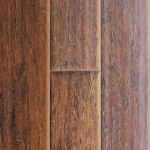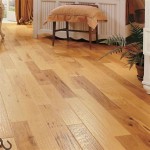Wood Flooring Transition Strips: An Essential Guide
Transition strips, also known as T-moldings, are vital components in any flooring project that involves the joining of different types of flooring materials. In the case of wood flooring, transition strips provide a smooth and seamless transition between wood floors and other surfaces, such as tile, carpet, or vinyl.
The primary purpose of wood flooring transition strips is to conceal the expansion gap between the two flooring surfaces. Wood is a natural material that expands and contracts with changes in temperature and humidity. Leaving an expansion gap between wood flooring and other surfaces allows for these movements without causing damage. Transition strips cover this gap and prevent dirt or debris from accumulating.
Transition strips also serve an aesthetic purpose. They can enhance the overall design of a room by creating a decorative border between different flooring materials. Available in a variety of styles and finishes, transition strips can be matched to the existing flooring or used as a contrasting element to add visual interest.
Types of Wood Flooring Transition Strips
There are several types of wood flooring transition strips to choose from, each designed for specific applications. Some of the most common types include:
- T-Moldings: T-moldings are the most versatile type of transition strip. They are used to join two floors of the same height, such as wood flooring and laminate flooring.
- Reducer Moldings: Reducer moldings are used to transition from a higher floor to a lower floor, such as from wood flooring to carpet or vinyl.
- End Caps: End caps are used to finish the edges of wood flooring where it meets a wall or doorway.
- Stair Nosing: Stair nosing is used to create a safe and finished edge on stairs.
Factors to Consider When Choosing Transition Strips
When choosing wood flooring transition strips, several factors should be taken into consideration:
- Type of Flooring: The type of flooring materials being joined will determine the type of transition strip required.
- Height Difference: The height difference between the two flooring surfaces will determine the appropriate size of the transition strip.
- Style and Finish: Transition strips come in a variety of styles and finishes to match the existing flooring or create a contrasting effect.
- Durability: Transition strips should be made from durable materials to withstand wear and tear.
Installation of Wood Flooring Transition Strips
The installation of wood flooring transition strips requires precision and attention to detail. It is recommended to hire a professional flooring contractor to ensure a proper installation. However, if you are confident in your DIY skills, you can follow these steps:
- Measure and mark the location of the transition strip.
- Cut the transition strip to the appropriate length.
- Apply adhesive to the underside of the transition strip.
- Place the transition strip in its marked location and press firmly into place.
- Nail or screw the transition strip into the subfloor through the predrilled holes.
Wood flooring transition strips are essential components in any flooring project involving the joining of different flooring materials. By choosing the right type of transition strip and installing it properly, you can create a smooth and seamless transition that will enhance the overall look and functionality of your flooring.

Transition Between Old Wood Floors And New Hardwoods With A Strip Hardwood Wide Plank Flooring

Floor Transition Strip Flooring At Com

Types Of Flooring Transitions And Trim Ll

Trimmaster Oak Hardwood 2 1 In X 36 Seam Binder Transition Strip Hw87436 The Home Depot

Floor Transition Strips Uneven High Quality Flooring Trims You Ll Love

Laminate Flooring Transition Strips Commercial Tarkett

How To Install Transition Strips In Doorways

Build A Transition Strip To Make Up Height Between Two Floor Levels

How To Transition Carpet Vinyl Plank Flooring

Door Transition Strips Floor Strip
Related Posts








